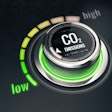Monday, November 28 | 10:50 a.m.-11:00 a.m. | SSC01-03 | Room S502AB
A new CT study from the Medical University of South Carolina found significant differences in myocardial perfusion parameters for ischemic and infarcted myocardium compared with normal myocardium.The prospective study, which used MRI and SPECT as a reference standard, goes a long way toward quantifying blood-flow differences that are lacking in perfusion assessment, Dr. Rozemarijn Vliegenthart, PhD, told AuntMinnie.com.
CT scanners with large detector widths or two x-ray sources enable dynamic image acquisition at multiple time points during the passage of a contrast medium bolus through the myocardium, she said.
"Not only does this technique allow for subjective evaluation of myocardial perfusion defects, it also allows for quantitative assessment of myocardial blood supply," Vliegenthart said.
The results showed significant differences in absolute myocardial perfusion parameters for ischemic and infarcted myocardium (based on SPECT/MRI) compared with normal myocardium.
Eleven of the patients had a myocardial infarct (two with peri-infarct ischemia), and four showed reversible ischemia on MRI and/or SPECT. On the CT perfusion maps, a corresponding perfusion defect was detected in all patients.
Dynamic stress myocardial CT perfusion imaging identifies areas of abnormal flow reserve and infarction with a high degree of correlation to SPECT and MRI, the group concluded. "Thus, we may be able to distinguish areas of the myocardium as normal and abnormal on the basis of quantitative perfusion parameters," Vliegenthart said.




















